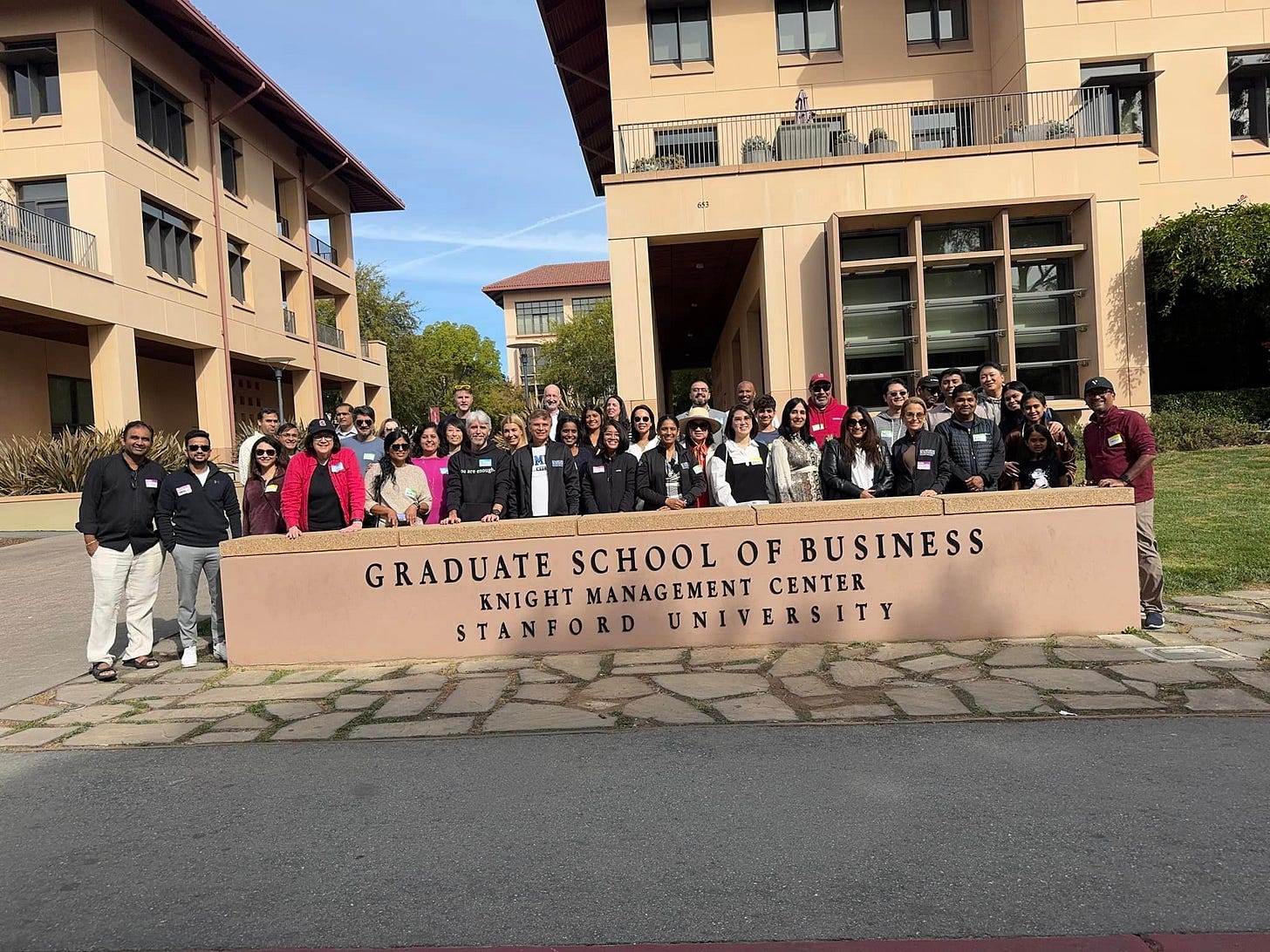Stanford LEAD, Graduate School of Business
would you be interested in this life-changing program? Is it right for you?
As I near the end of the Stanford LEAD program, I can’t help but reflect on the transformative experience it has been. This isn’t just any online course; it’s an intensive, rigorous program from Stanford Graduate School of Business, designed for professionals worldwide who want to elevate their impact and deepen their expertise in leadership, strategy, and innovation. LEAD offers an entirely virtual experience with no GMAT requirement, and while you can complete it in as little as a year, you’re encouraged to move at your own pace. While LEAD does not confer a Master of Business Administration (MBA), it awards a Stanford certificate and Stanford-affiliated alumni status, which connects you to a fulfilling global network while distinguishing you as a participant in this selective program. Unlike passive video-watching certifications, LEAD demands engagement. You work through both individual and team assignments in real-time with peers in the timezone of your choice, creating a truly immersive experience—one that feels like a rigorous night-time college program alongside your full-time job.
Among the courses I took, three stand out as absolute game-changers: Business Model Analysis and Design (BMA), Building Power to Lead (Power), and Design Thinking: From Insights to Viability (Design Thinking). Each course reshaped my perspective, broadened my toolkit, and brought me closer to realizing my ambitions in ways I hadn’t expected.
First, Business Model Analysis and Design delivers unparalleled insight into the language and mechanics of business. We dive into core concepts like value propositions, revenue models, product-market fit, and go-to-market strategies. For anyone looking to engage seriously with founders, investors, or venture capitalists, fluency in these ideas is crucial. BMA taught me not just the terminology but also the frameworks to understand and pitch business models that stand out. This course has a strong entrepreneurial focus, making it a playground for aspiring entrepreneurs to bring long-held dreams into the tangible world. If you’ve ever had a business idea in the back of your mind, BMA provides the structure and know-how to move from ideation to planning. This course isn’t just about theory; it’s about actualizing those ideas with purpose and precision.
Then there’s Building Power to Lead —an eye-opening exploration of power dynamics that shape every relationship and professional interaction. The curriculum doesn’t shy away from discussing what some might call “office politics,” but it reframes them in a broader, more constructive light. Power isn’t confined to the workplace; it’s present in almost every interaction, from business negotiations to personal relationships. Power dynamics exist whether we acknowledge them or not. Through case studies and practical exercises, the course shows how to wield influence strategically. One of the most practical lessons focused on building personal branding. In today’s world, self-promotion and presence are everything. Ever wonder why certain professionals seem to dominate your LinkedIn feed or why everyone seems to be launching a podcast? This course reveals that these are not just trends but powerful tools for establishing influence and authority—tools that we learned to master for our careers and professional identities. In short, the game of power is inescapable; if you avoid it, others will take yours away from you.
Design Thinking: From Insights to Viability offers a structured yet deeply creative approach to solving real-world problems. For anyone in product management or any field focused on user experience, this course is a revelation. It centers on understanding user needs through a hands-on, iterative process of observation, ideation, and prototyping. It’s not about guessing what users want; it’s about involving them in the solution process, ensuring the products and services we develop truly resonate. The skills gained from this course are invaluable in today’s market, where customer-centricity can make or break a business. I learned to approach problems empathetically, moving from insights to viable solutions that address real pain points. Design thinking isn’t just a methodology; it’s a mindset that has changed the way I approach every professional challenge.
Some might argue that the true value of an MBA lies in the networking opportunities it provides. LEAD may be a virtual program, but it’s fully committed to fostering meaningful connections among its participants. Through various social networking tools and organized events, LEAD bridges any distance. Since I’m in the San Francisco Bay Area, I’ve been fortunate enough to attend in-person events like the winter holiday dinner and monthly meetups on Stanford’s beautiful campus. These gatherings are a chance to engage with fellow LEAD participants, put learnings into practice, and explore emerging industry trends in one of the most dynamic business ecosystems in the world. These events bring together an inspiring mix of talents—managers, founders, authors, and individual contributors—all passionate about driving change and growth.
Reflecting on this experience, it’s clear that the value of the LEAD program is directly proportional to the effort you invest in it. LEAD challenges you to dig deep and put your ambition and drive into action. If you’re looking for a program that’s not just about content but about truly expanding your influence and creating a lasting impact, LEAD is the program for you. It has not only equipped me with a powerful skill set but has also connected me to a global network of equally driven professionals. This is more than a program; it’s a journey that prepares you to step into new arenas with confidence, knowledge, and a unique Stanford perspective.





